
The 100 most common words among all of the incident descriptions (minus professor names) were used to create this word cloud image.
By: Marion Leary & Erin Reichenberger
Last month the website Professor Watchlist, created by Turning Point USA, began capturing the identities of professors who teach at academic institutions, allowing students to report professors who “advance a radical agenda,” along with previous news stories. On the website, students can “Submit a Tip” to “expose and document college professors who discriminate against conservative students and advance leftist propaganda in the classroom.” As of this article, 144 professors were included on the Watchlist though that number and the names of those listed are dynamic.
Since the Watchlist was made public last month, numerous news outlets have published pieces discussing the list including the New York Times, New York Magazine, the Washington Post, Time Magazine, and Slate, though none that we are aware of, have sought to describe the professors and universities included. Therefore, to better understand the demographics of those being reported, we performed a descriptive analysis of the publicly available data from the Watchlist website between November 25 — December 3, 2016. One hundred and fifty-five professors were identified, although some have subsequently been removed from the website. Additionally, a single professor is twice included in the analysis to account for incidents that occurred in non-consecutive years.
Variables were extracted directly from the Watchlist Directory (Search by Name) on the Professor Watchlist website, as well as the sources linked to each professor’s Watchlist page. When needed, we searched the world wide web for clarity and/or confirmation of the information provided on the site. Gender and race were determined by the photographs included on the individual professor’s Watchlist page, with the understanding that not everyone views gender as a binary concept and race is not always visually representative. That being said, assumptions were made in the best interest of describing the professors being reported.
Of the 156 incidents included on the Watchlist, 100 (64%) were classified as male and 108 (69%) were classified as white. The majority were Professors, 71 (46%), Associate Professors, 34 (22%) or Assistant Professors, 20 (13%) (Table 1) from 97 Universities (Figure 1), with a median of 1 individual per university and a range of 1—9. The largest number of individuals were from the University of California (9) and the University of North Carolina (7). The reported individuals taught in 59 different departments with a median of 3 individuals per department and a range of 1–15 including History (15), English (14), Political Science (12), and Communications (11) (Figure 2). Professors on the Watchlist were from 37 different states throughout the United States (Figure 3) with a median of 3 per state and a range of 1–21. California (21), Illinois (14), New York (14), North Carolina (10) and Texas (10) were the most represented states (Figure 4).
The majority of professors who were submitted to the Watchlist were attached to incidents that had occurred in either the classroom setting, 60 (38%) or on a university campus, 27 (17%). Most of these incidents occurred in the years 2014 (34), 2015 (36), or 2016 (34) (Table 1).
Our analysis showed that the majority of those included on the Watchlist were classified as white males. It may be somewhat counter-intuitive that white males represent the majority of reported persons until one considers the underrepresentation of women and people of color that has been reported in academia. Additionally, we found that incidents occurred by individuals housed in a wide range of university departments, with the majority occurring in the political science and liberal arts fields. Incidents represent individuals from 97 colleges and universities, which is a relatively small number given that there are over 7,000 secondary institutions in the US.
Further, our results indicated that the states with the most reported incidences were California, Illinois, New York, North Carolina, and Texas, with clustering of universities in the Midwest, South and Northeast regions (Figure 3). It is unclear if this is related to the high number of students at these universities, or possibly coordinated actions of specific student groups. There are a number of limitations inherent in our analysis including the quality of the data input into the Professor Watchlist database. Upon deeper investigation, we found instances of misrepresentation, such as describing reported individuals as a professor when they may have been a guest lecturer or a graduate student. Additionally, some of the reported persons had more administrative roles and do not appear to have been teaching faculty at the time of the incident.
Though we did not report on the specific incidences included on the Watchlist, a concerning component of our findings is related to the fact that most did not occur on campus and do not appear to be related to the person’s professional function. This topic is not new to people in academia as the legality of academic freedom and the First Amendment rights of faculty members in public higher education institutions has long been debated. As we move into a new political era it will be illuminating to a) track the number of submissions in the coming years, b) observe geographical hotspots, and c) track the number of incidents that occur outside of the academic setting. We call on all students and academics alike to continue to watch the Watchlist.
Note: The authors published this article independently without academic, industrial, or federal affiliation.
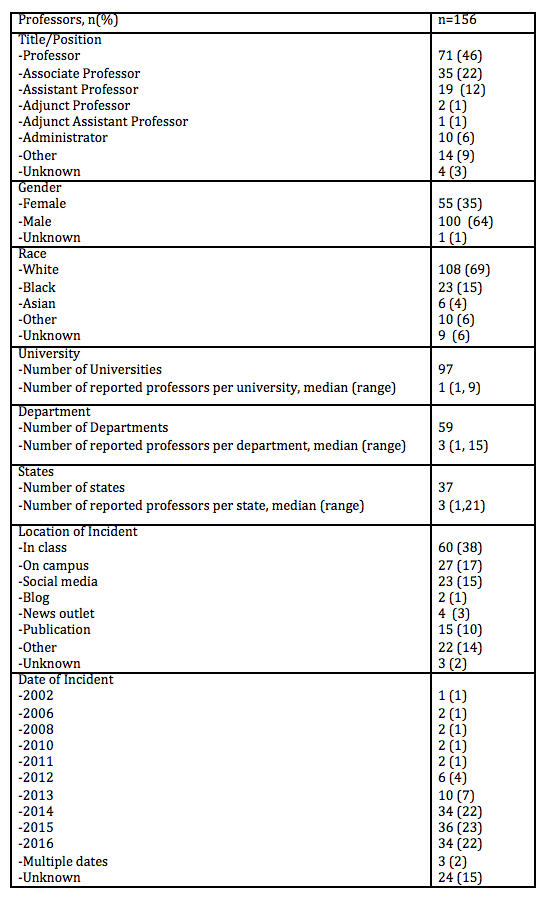
Table 1. Descriptive analysis of professors and universities on the Professor Watchlist.
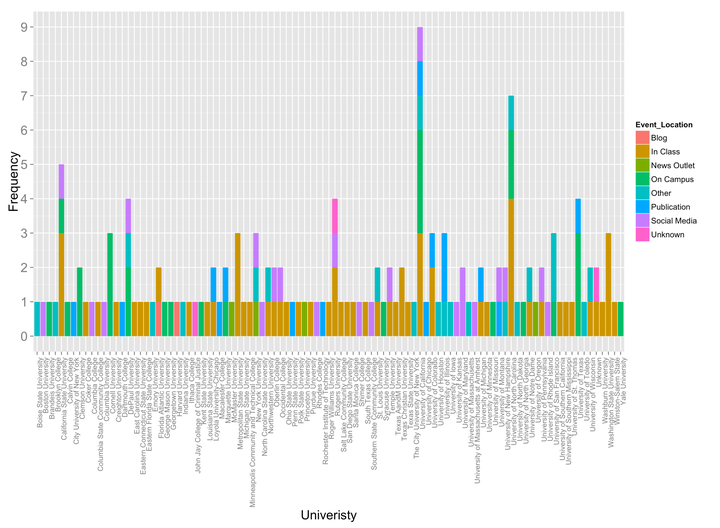
Figure 1. Histogram of the number of reported professors by university and reported location of incident.
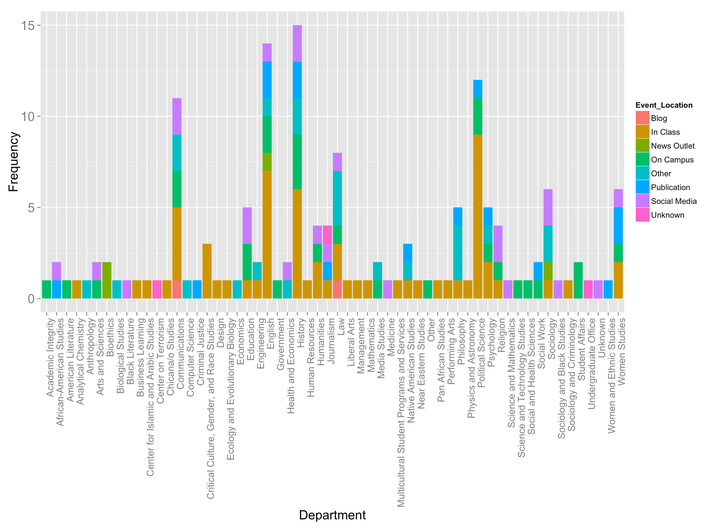
Figure 2. Histogram of the number of reported professors by department and reported location of incident.
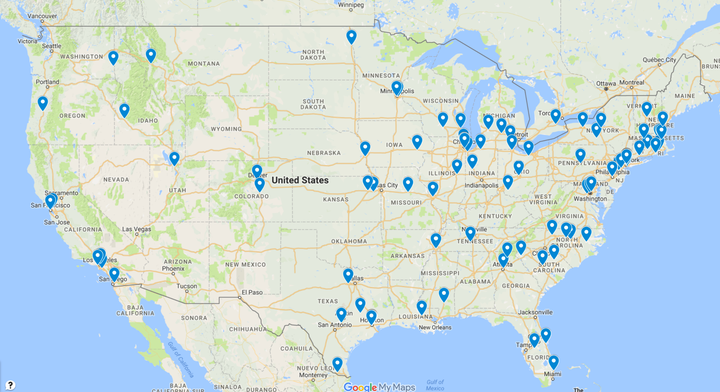
Figure 3. The geographic locations of the universities included on the Watchlist.
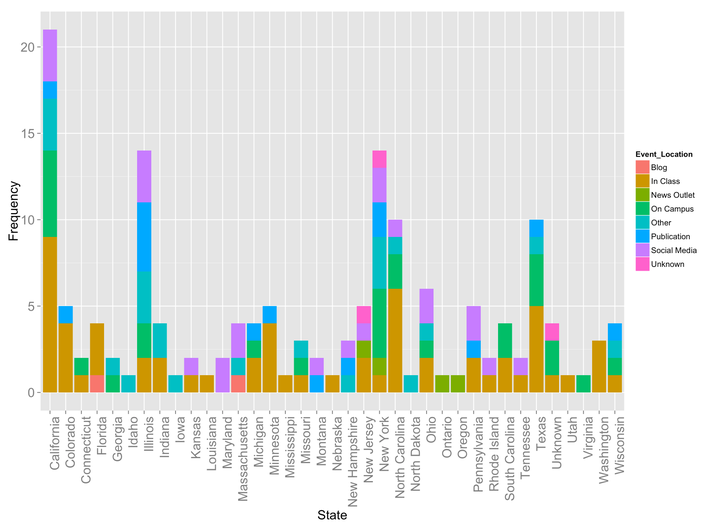
Figure 4. Histogram of the number of reported professors by state and reported location of incident.
